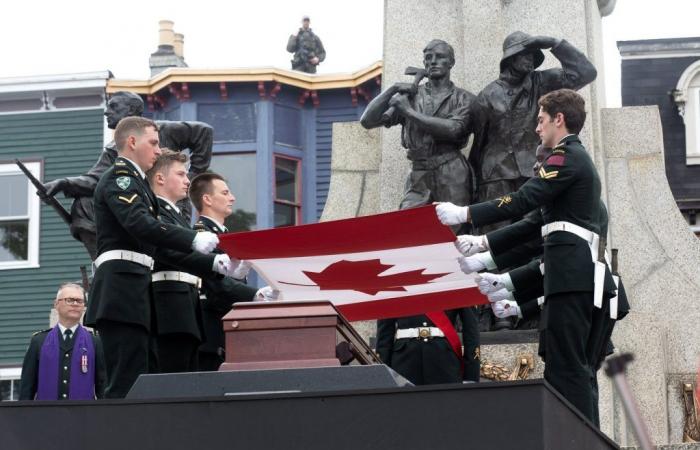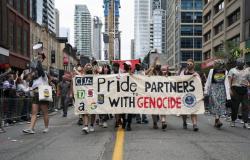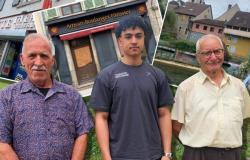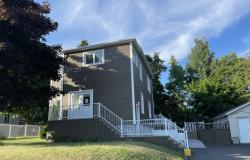ST. JOHN’S, NEWFOUNDLAND, NL — Hundreds of people gathered in Newfoundland and Labrador’s capital Monday morning to pay tribute to a First World War soldier who finally returned from the battlefields of France after more than 100 years.
The unknown Newfoundland soldier was buried in a black granite grave at the Newfoundland National War Memorial in St. John’s at 11 a.m. The morning was gray and damp, but the rain stopped for the soldier’s reburial, which was preceded by a powerful performance of the “Ode to Newfoundland.”
As members of the Canadian Armed Forces gently placed a temporary cover over the soldier’s final resting place, more than 100 years after his death, the skies cleared again.
“So we commit this body to the earth,” said Canadian Armed Forces Chaplain Lt.-Col. Shawn Samson, speaking as he stood at the head of the soldier’s grave before a crowd that included Prime Minister Justin Trudeau and Governor General Mary Simon.
Across the country, July 1 marks Canada Day, but in Newfoundland and Labrador, Remembrance Day is observed first.
This day is to remember the hundreds of young men of the Newfoundland Regiment who died at the disastrous Battle of Beaumont-Hamel in northern France, at a time when Newfoundland was not yet part of Canada.
About 800 members of the Royal Newfoundland Regiment charged over the trenches on the morning of July 1, 1916, armed only with rifles and bayonets, into the direction of German machine-gun fire.
Only 68 of them were still able to fight the next morning. The rest were killed, wounded or missing.
About 12,000 Newfoundland men enlisted to fight in the First World War, and more than 3,500 were wounded or killed, according to Heritage Newfoundland and Labrador.
The island, which was not part of Canada, was home to some 240,000 people. With such a small population, the sheer number of casualties was felt throughout Newfoundland – and it is still felt today.
For those who watched Monday’s ceremony, whether in person in St. John or on television in smaller, more remote communities, the unknown soldier may have stood in the trenches alongside his grandfathers or his great-uncles.
The ceremony to lay the Unknown Soldier to rest in his home country coincided with the 100th anniversary of the unveiling of the National War Memorial in St. John’s. The soldier’s grave will represent Newfoundlanders and Labradorians who died from all branches of service who do not have a known grave. The soldier’s identity will therefore not be the subject of an investigation.
Newfoundland and Labrador Premier Andrew Furey acted as the unknown soldier’s next of kin, and he walked behind the coffin as it ascended the steps to the national monument, which features a statue of ‘a woman holding a flaming torch high in the sky with her left hand, and a sword pointed toward the ground in her right.
Before the temporary cover was placed over the Tomb of the Unknown Soldier, it was dotted with 820 blue forget-me-nots, representing the 820 Newfoundland soldiers who fought in the First World War and who have no known grave.
“Today we welcome one of our own,” said veteran Perry Grandy, who co-conducted the ceremony.
Sarah Smellie, The Canadian Press






